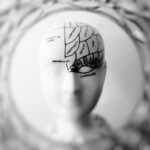
Ever woken up from a bizarre dream and thought, “What on earth was that about?” You’re not alone. Dreams have fascinated humanity for centuries. From ancient texts interpreting dreams as divine messages to modern psychology seeing them as windows into our subconscious, dreams have always carried a unique mystique.
But, why do we dream? Is there a scientific reason behind it or something more abstract? Let’s unravel the mysteries of dreaming by exploring its science, theories, and the profound role it plays in our lives.
By the end of this post, you’ll have a clearer understanding of why dreaming matters and how it connects us to both our inner selves and the world around us.
A Brief History of Dreaming
Dreams have deep cultural and historical significance. Ancient Egyptians believed dreams were messages from the gods, while the Greeks turned to oracles to interpret their visions. Indigenous cultures often viewed dreams as spiritual journeys, connecting individuals with ancestors or alternate realms.
Fast-forward to the present day, and dreaming continues to occupy a central role in studies of the mind. We no longer see dreams as mere curiosities; rather, they offer meaningful insights into our inner workings.
Psychologist Carl Jung once said, “The dream is the small hidden door in the deepest and most intimate sanctum of the soul.” This perspective has made dreams a core topic of study for both scientists and dream analysts alike.
The Science Behind Dreaming
Sleep Cycle & REM Sleep
To grasp why we dream, let’s first understand how sleep works. Sleep unfolds in cycles, consisting of four stages. The most critical for dreaming is REM (Rapid Eye Movement) sleep, the fourth stage.
During REM sleep:
- Your brain becomes highly active, even mimicking the activity of wakefulness.
- Muscles remain paralyzed to prevent acting out dreams.
- This is when vivid, narrative dreams often occur.
On average, we spend about two hours dreaming each night. Scientists believe this stage of sleep plays an essential role in cognitive functions, which leads us to our next section.
Theories on Why We Dream
Dreaming has intrigued some of the greatest minds in psychology and neuroscience. While there’s no definitive answer to why we dream, here are the leading theories worth considering.
Freud’s Psychoanalytic Perspective
Sigmund Freud saw dreams as a gateway to the unconscious. He argued that dreams reflect our deepest desires, fears, and unresolved conflicts.
According to Freud, dreams are often symbolic, hidden meanings disguised as seemingly nonsensical stories. For example, Freud believed that water represents birth or renewal while climbing stairs could symbolize ambition or sexual desire.
Freud famously said, “Dreams are the royal road to the unconscious.” This perspective considers dreams a tool for self-discovery.
Activation-Synthesis Model
This neurological theory moves away from symbolism. Proposed by Harvard researchers Dr. John Allan Hobson and Dr. Robert McCarley, this model views dreams as the brain’s way of synthesizing random signals during REM sleep.
While these signals are chaotic, the brain tries to organize them into a coherent narrative—hence the sometimes absurd nature of dreams.
Threat Simulation Theory
Dream researcher Antti Revonsuo hypothesized that dreams evolved as a mechanism to simulate threatening situations as practice for survival. Essentially, dreaming could be a “safe space” to rehearse responses to danger, ensuring better preparedness in the real world.
The Role of Dreaming in Memory and Emotion
Interestingly, dreaming isn’t just abstract storytelling—it has measurable benefits for brain function.
Memory Consolidation
Numerous studies suggest that dreams, especially during REM sleep, play a role in consolidating memories. The brain processes and organizes information gathered during the day, helping retain what’s important and discard the rest.
Emotional Regulation
Ever wake up feeling better after a stressful day? That’s no accident. Dreaming seems to soothe emotional wounds. It’s like therapy for your mind, helping you process complex feelings and reset for the day ahead.
Dr. Rosalind Cartwright, a pioneer in dream research, noted that dreams allow us to “untangle” and resolve emotional conflicts, especially after traumatic experiences.
Common Dream Themes and Meanings
Certain dream themes seem universal—so what do they mean? While interpretations vary, here are a few common ones and their potential meanings according to dream analysts.
- Falling: Represents a loss of control or deep insecurity.
- Being chased: Reflects stress or avoidance in waking life.
- Flying: A symbol of freedom or rising above a challenge.
- Teeth falling out: Linked to anxiety or concerns about appearance and communication.
- Being unprepared for an exam: Anxiety about underperformance or lack of readiness.
But always remember Gail Godwin’s quote, “Dreams say what they mean, but they don’t say it in daytime language.” Context is key.
Lucid Dreaming
What Is Lucid Dreaming?
Lucid dreaming occurs when you become aware that you’re dreaming and can even control certain aspects of the dream. Think of it as being the director of a movie playing in your head.
How to Achieve Lucid Dreaming
Interested in giving it a shot? Here are some tips to help you consciously explore your dream world:
- Keep a Dream Journal: Write down your dreams upon waking to improve dream recall.
- Perform Reality Checks: Ask yourself during the day, “Am I dreaming?” Over time, this habit carries into dreams.
- Meditation & Visualization: Practicing mindfulness improves your awareness, making lucidity during dreams more likely.
Some experts, like Patricia Garfield, Ph.D., author of Creative Dreaming, advocate for exploring dreams to develop creative solutions to problems in waking life.
The Future of Dream Analysis
Emerging technologies are pushing the boundaries of dream exploration. For instance:
- Neuroimaging allows scientists to visualize dream activity by tracking brain waves.
- AI-powered tools might one day interpret dream patterns through collected data.
- Wearable devices already aim to influence dreams, potentially offering therapeutic benefits for PTSD patients or enhancing creativity.
The possibilities are both exciting and slightly eerie.
Unlocking the Mysteries of Dreams
Dreams are deeply personal yet universally intriguing. They connect us to the complexities of our subconscious, offering insights into who we are and what we value.
Whether you see dreams as Freud’s hidden door to the soul or as an avenue for emotional healing, there’s no question they enrich the human experience.
If you’re fascinated by dreams, check out our guides on Lucid Dreaming 101 and Sleep Hygiene Tips for actionable ways to enhance your dream life. Like Patricia, Garfield says, “Dreams are a window into the complexities of human consciousness.”
Sweet dreams, explorers!





















0 Comments